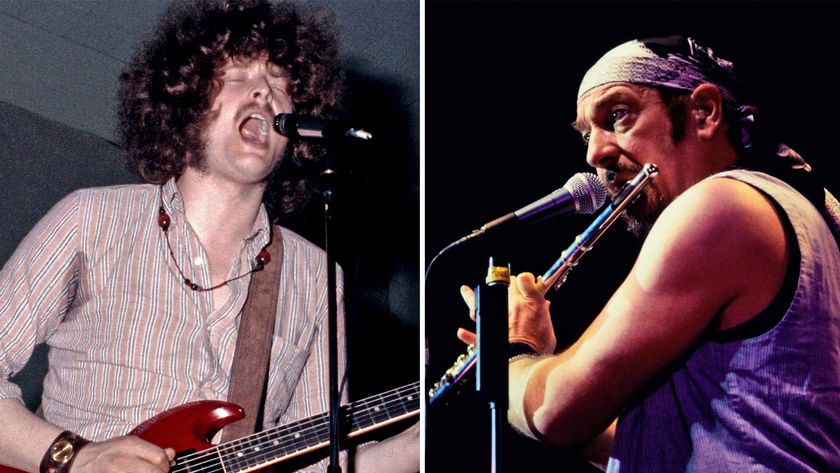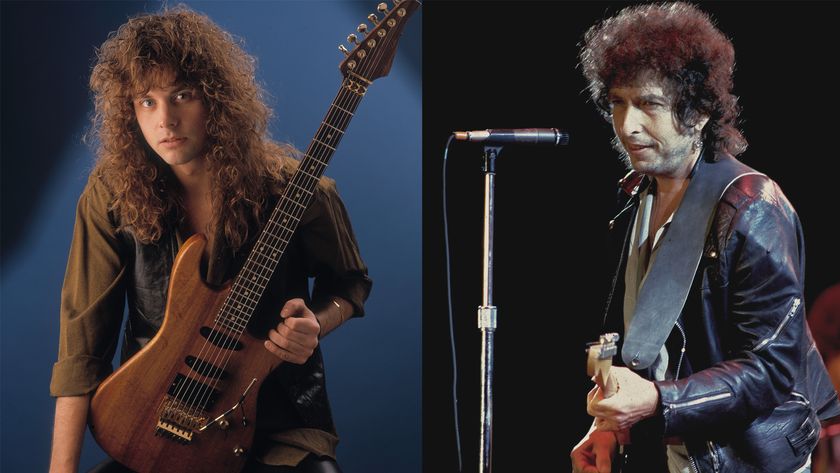"When you leave a 12-string neck open and play on the 6-string neck, you get the 12 strings vibrating in sympathy, like an Indian sitar. I use it on Stairway to Heaven like that": How Jimmy Page brought the studio magic of Stairway to the stage
Not only did the Gibson EDS-1275 make performances of Led Zeppelin's trademark eight-minute epic possible in the convenience sense, it also added another dimension to the iconic song's sound

Today (January 9), Led Zeppelin maestro Jimmy Page celebrates his 80th birthday. Page's contributions to the electric guitar lexicon are countless, one of the most iconic being Zeppelin's Stairway to Heaven, an eight-minute epic topped out by a soaring lead break almost universally considered to be one of the greatest guitar solos of all time.
For Stairway, Page used a Harmony acoustic guitar, a Fender Electric XII 12-string, and – for the triumphant solo – his trusty Telecaster. Obviously, the guitarist couldn't use all three when playing the song live with Zeppelin, so for that, he turned to Gibson’s double-neck EDS-1275.
Not only did the EDS-1275 make performances of Stairway possible in the convenience sense, it also added another dimension to its sound.
“The main thing is, there's an effect you can get where you leave the 12-string neck open – as far as the sound goes – and play on the 6-string neck, and you get the 12-strings vibrating in sympathy,” Page explained in a 1977 interview with Guitar Player.
“It's like an Indian sitar, and I've worked on that a little bit. I use it on Stairway like that – not on [Led Zeppelin IV] but on the [The Song Remains the Same] soundtrack and film. It's surprising, it doesn't vibrate as heavily as a sitar would, but nonetheless, it does add to the overall tonal quality.”
Page acquired his EDS-1275 via special order, at a time when Gibson had stopped production of the model. The subsequent demand stemming from Page's prominent use of the model on live versions of Stairway was arguably the biggest reason why the EDS-1275 was reinstated to Gibson's lineup in the mid-'70s, where it has remained ever since.
During the Zeppelin days, Page left his double-neck model essentially the same as it was when it first came into his possession, though he'd later swap out the Gibson pickups on the six-string with coverless Seymour Duncan units. The guitar would go on to be exhibited at the Metropolitan Museum of Art in New York City, as part of the institution's Play It Loud: Instruments of Rock and Roll exhibit.
Get The Pick Newsletter
All the latest guitar news, interviews, lessons, reviews, deals and more, direct to your inbox!

Jackson is an Associate Editor at GuitarWorld.com and GuitarPlayer.com. He’s been writing and editing stories about new gear, technique and guitar-driven music both old and new since 2014, and has also written extensively on the same topics for Guitar Player. Elsewhere, his album reviews and essays have appeared in Louder and Unrecorded. Though open to music of all kinds, his greatest love has always been indie, and everything that falls under its massive umbrella. To that end, you can find him on Twitter crowing about whatever great new guitar band you need to drop everything to hear right now.

"Shane called me and said, 'The guitar is here. It plays amazing. It's providence calling!’” How an extremely rare goldtop 1958 Les Paul Standard found its way into the hands of Imagine Dragons guitarist Wayne Sermon

“A lot of Who fans would be really pleased.” Pete Townshend ponders using AI to re-create his ‘70s heyday for fans who prefer the Who's classic songs







